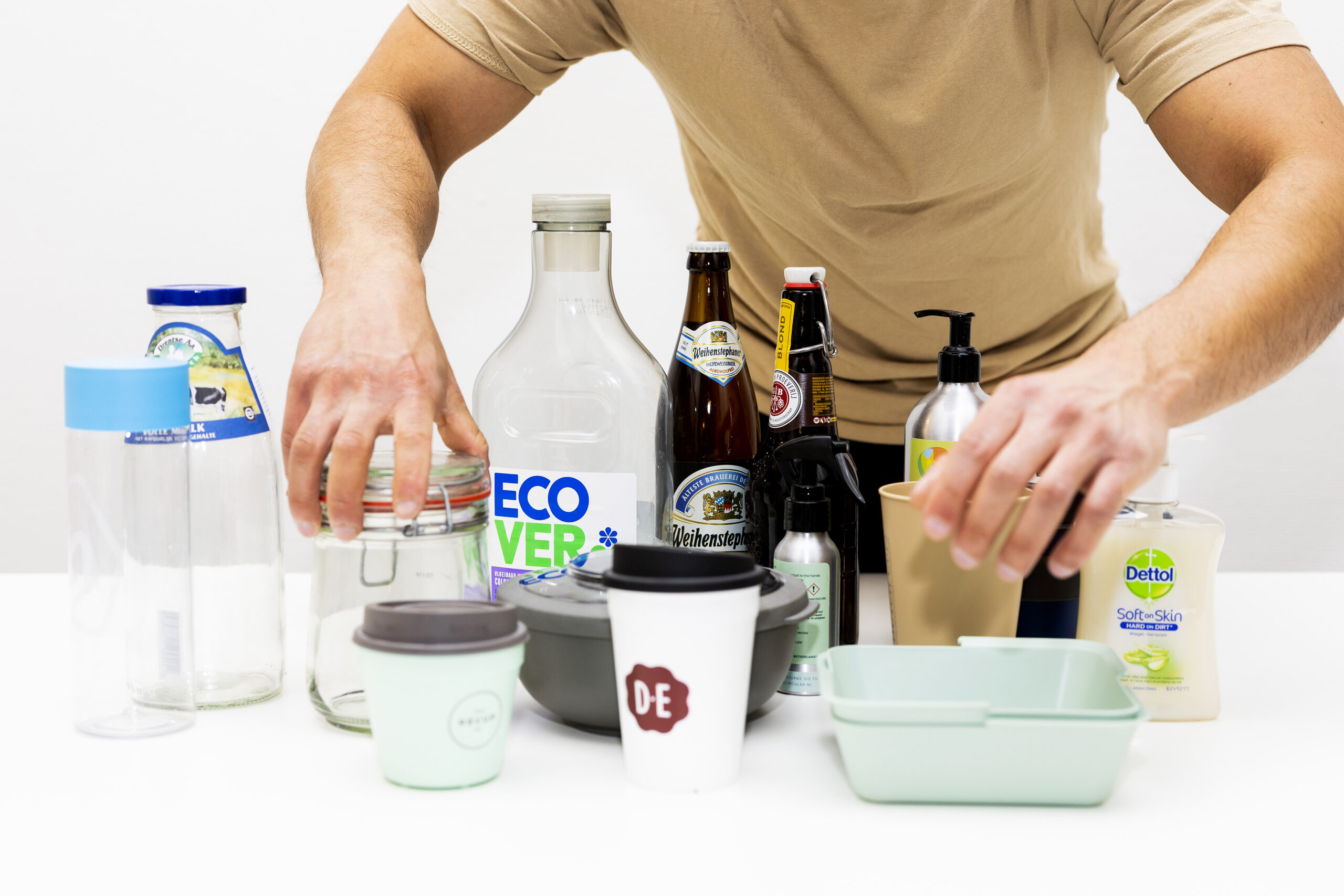Life Cycle
Assessment
Where do you start if you want to make a product or service more sustainable and improve environmental performance? A life cycle assessment (LCA) offers starting points by calculating the environmental impact.
Quick scan, LCA-tool or extended LCA?
A life cycle maps the environmental impact of a product or process from the extraction of raw materials to the waste stage. With the acquired insight into the cause and nature of the environmental consequences of your product or service, you can make targeted improvements.
LCA Quickscan
An LCA Quickscan provides a quick and cost-effective picture of the environmental impact of a product or process. This is ideal for exploring the environmental impact of different product or process scenarios and a first step towards process optimization. With a limited effort you can get a good picture of 80-90 percent of the environmental impact. The results are primarily intended for the company or organization to get a rough picture, to discuss these internally and to formulate actions.
Examples of LCA Quickscan projects
- Royal Flora Holland, LCA Quickscan Sleeves for flowers and plants
- Swapfiets, LCA Quickscan for bicycle sharing system (2021)
- HAK, LCA Quickscan of HAK stand-up pouch, glass and tin packaging (2019)
- Wine Fund Foundation, LCA Quickscan Wine Packaging (2019)
- Scallop fruit juices, LCA Quickscan glass bottles and return logistics (2019)
- EPS Netherlands, LCA Quickscan EPS collection process (2018)
- Flamco, LCA Quickscan expansion vessels HVAC (2018)
- Accell Group, LCA Quickscan (Electric) Bicycles (2017)
- SUEZ, LCA Quickscan “Cup2Paper”, recyclable paper coffee cups (2011, 2016 update)
- Extended Life Cycle Assessment (LCA)
LCA or calculation tool
Would you rather get started yourself to carry out an LCA? We can develop a tailor-made LCA or calculation tool: a model to calculate, compare and analyze the environmental impact of products or processes. The tool includes specific information relevant to the product portfolio such as materials used, processes and waste treatment. After we have designed this tool, you can enter your own data to determine the environmental impact of your products during their lifetime. The aim is to help employees make well-founded decisions about the sustainable design of their products.
An example:
- KIDV, Knowledge Institute for Sustainable Packaging,, Calculation tool for reusable packaging (2023)
- KIDV Knowledge Institute for Sustainable Packaging, LCA/CO₂ tool for reusable packaging (2020/update 2022)
Extended Life Cycle Assessment
We examine the environmental impact of the entire chain in an extensive life cycle analysis, including a benchmark with competitors and new concepts. We use the standard LCA methodology (ISO 14040/44). It is possible to focus the results of the LCA on CO₂ emissions. You can use the results for communication with your customers and as input for certification.
Examples of extended LCA projects
- KIDV Knowledge Institute Sustainable Packaging, LCA/CO₂ tool for reusable packaging (2020)
- Tarkett – LCA renewed floor covering separation process (2019)
- Ekofish: CO2 benchmark Sustainable energy-efficient fishing vessel (2020)
- Vanderlande LCA study and EPD: Blueveyor conveyor belt (2015)
- Black Bear Carbon, LCA study for Carbon Black recycling from car tires (2014)
- Inalfa Roof Systems, LCA study sunroof Volvo XC60 (2013)
Similar services
Quickscan Circularity
We can also perform a Quickscan Circularity. This gives an entrepreneur a quick insight into how circular his or her product or service is.
RecycleScan
To ensure that packaging can be properly recycled at the end of its life, we have developed a system for monitoring, assessing and advising on the recyclability of packaging.
Interested?
Are you curious about how our LCA services can help you determine and limit the environmental impact of your product or process? Please contact Jannes Nelissen or Margarida Vidinha.
Related projects
Want to
know more?
Contact us!





